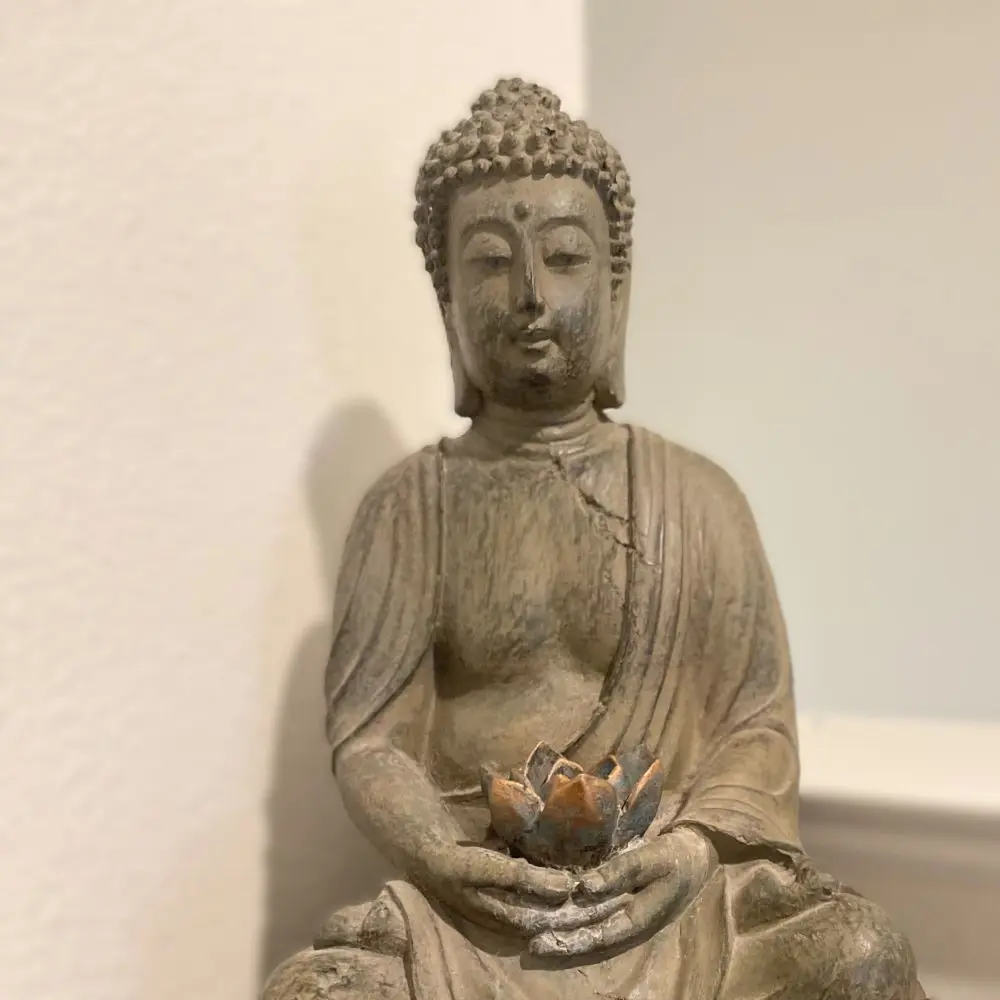“O Lord Chennamallikarjuna,
Sky Clad by Mukunda Rao
Listen to me if you will, listen not
If you will not: I cannot rest contented
Unless I sing of you.
O Lord, accept me if you will, accept not
If you will not: I cannot rest in peace unless
I worship you.
Lord, love me if you will, love not
If you will not; I cannot rest in peace unless I hold
You in my arms.
Lord, look at me if you will, look not
If you will not, I cannot rest in peace unless
I dwell on your mystery and
Worship you, immersed in bliss.”
Akka, or “older sister” they used to call her with affectionate respect, was Mahadevi, born around 1130 C.E. in Shivamogga district in Karnataka. Her parents were ardent devotees of Shiva. Akka Mahadevi is one of the most prominent bhakti poets from the 12th century. Her passionate vachanas, or “utterings” or “spontaneous outpourings,” are heralded even now centuries later as masterpieces of language. It is surmised that she may have had a life-altering mystical experience in her early years. She considered herself married to her Lord, whom she addressed as Chennamallikarjuna. Malle, means “hill,” Shiva of the Peaks. Physically, she was a very beautiful woman, and the King/Chieftain of that region, Kaushika, wanted to marry her. She refused at first, citing her devotion to the Lord, but ended up marrying him as a way of saving her family from sure death. Through their short-lived marriage, she continued her intense devotion to her Lord Shiva, uncaring of social norms of the time.
“Akka! What are you doing? Where you going?” They cried aghast at what she had done. “Please put on your clothes, shame on you, bringing dishonor to us all!” They beseeched her. She strode out, uncaring, not heeding, her bare breasts bouncing with abandon, her eyes ablaze with a fire inside, her voice passionate, calling out to her Divine Lover, Lord Shiva. She was walking out on her husband, King Kaushika, in defiance of his claim on her physical body. She had forgiven him three times, when he had not kept his pre-marriage promise of not bothering her during her devotional practice (sadhana) or her meeting with her guru and fellow devotees (bhaktas) and wandering monks (maheshwaras). She walked out naked, stripping herself of any royal accoutrements as she had said she would if he went back on his word. Her approach to her physical body and her nakedness was bold, uncompromising, and unwavering in her spiritual quest. She refused the notion that her body would be a threat by exposing it openly, without any shame or guilt, a true maverick and a disruptor for even these modern times.
Mahadevi walked without any protection, without any clothing, “breast to breast with the cosmos,” more than 500 miles to reach her destination, Kalyana, which was the seat of the eminent saint-poets of the Virashaiva sect. To her, the body was not a liability or an obstacle, but gender and social conditioning was. And she shed that, too. She rebelled against this with fierce determination and quickly established herself as a force to be reckoned with amongst the more established male poets of the time, who were astounded by her powerful poetry, innate spiritual passion, and unshakeable devotion. In her vachanas, Akka Mahadevi expressed rather radical views on Hindu ritualism, caste divisions, patriarchy and gender roles, and, as many bhakti women poets explored, the Divine in sensual, metaphorical, and lyrical language. Like other bhaktas (devotees), her work describes the Divine (ishta devata or “god of one’s choice”) with an intense longing, a yearning with emotion (bhava) for a union that may seem sexual but is representative of the visceral need for union and transcendence.
The Bhakti movement (6th to 15th century C.E.) was a rebellion against brahmanical ideology and caste hierarchy, which established who had the most power, resources, access, and spiritual knowledge (jñāna). Sanskrit was the language of the Vedas, the Puranas, and other sacred texts and was not taught to the shudras (laborers, artisans, and farmers). The bhaktas circumvented this by compositions in the regional languages and dialects. Bhakti, devotion or love for the Divine, was mentioned in the ancient texts, such as the Upanishads, but it gained momentum as an unstructured mass movement, distinct in its expression and form. The bhaktas were the original activists, and they fearlessly criticized the powerful, usurped the stronghold of the privileged few with poetry, music, and dance, filled with love of their chosen deity.
The word bhakti, derived from the root word bhaj, means “to share in, belong to, be a part of.” The closest English translation is “surrender” and “devotion” (to the Divine). Bhakti as a way of reaching the Divine is mentioned in the Bhagavad Gita (100 C.E.) by Krishna as an accessible and simple way to achieve Moksha/liberation from the cycles of birth and death. Devotional narratives have been a part of every major religious practice, from Buddhism to Christianity to Islam to Hinduism. It is mostly women who have been the most vocal, visible, and visionary participants in this mass movement. While men bhaktas from this movement renounced their caste identity, privilege, and status, emptying themselves of ahankaar, women had to struggle with patriarchal values and family relationships. Some of the most notable bhakti yoginis were Andal, Mirabai, and Lalleshwari. In the Hindu tradition, there are nine forms of bhakti: sravana (“hearing God’s name”), kirtana (“hymns”), smarana (“remembering God”), padasevanam (“tend the feet of the Lord”), archana (“praising”), vandanam (“adoration”), dasya (“surrender”), sakhya (“friendship”), and atmanivedanam (“surrender of self”). Most of the bhakts practice a combination of all of the above.
Going back to Akka’s story, it is said she then travelled to Srishaila, another spiritual center for devotees, where she spent her last days in a cave and doing great penance (tapas). Similar to the great mystics of her time, she is thought to have gained some form of samadhi, a merging with the Divine. Even now, centuries after her passing, she is remembered by as a feminist icon, who, without any formal education, became a central figure of a learned group and defied social restrictions with her work, with her body, with her words, with her love.













